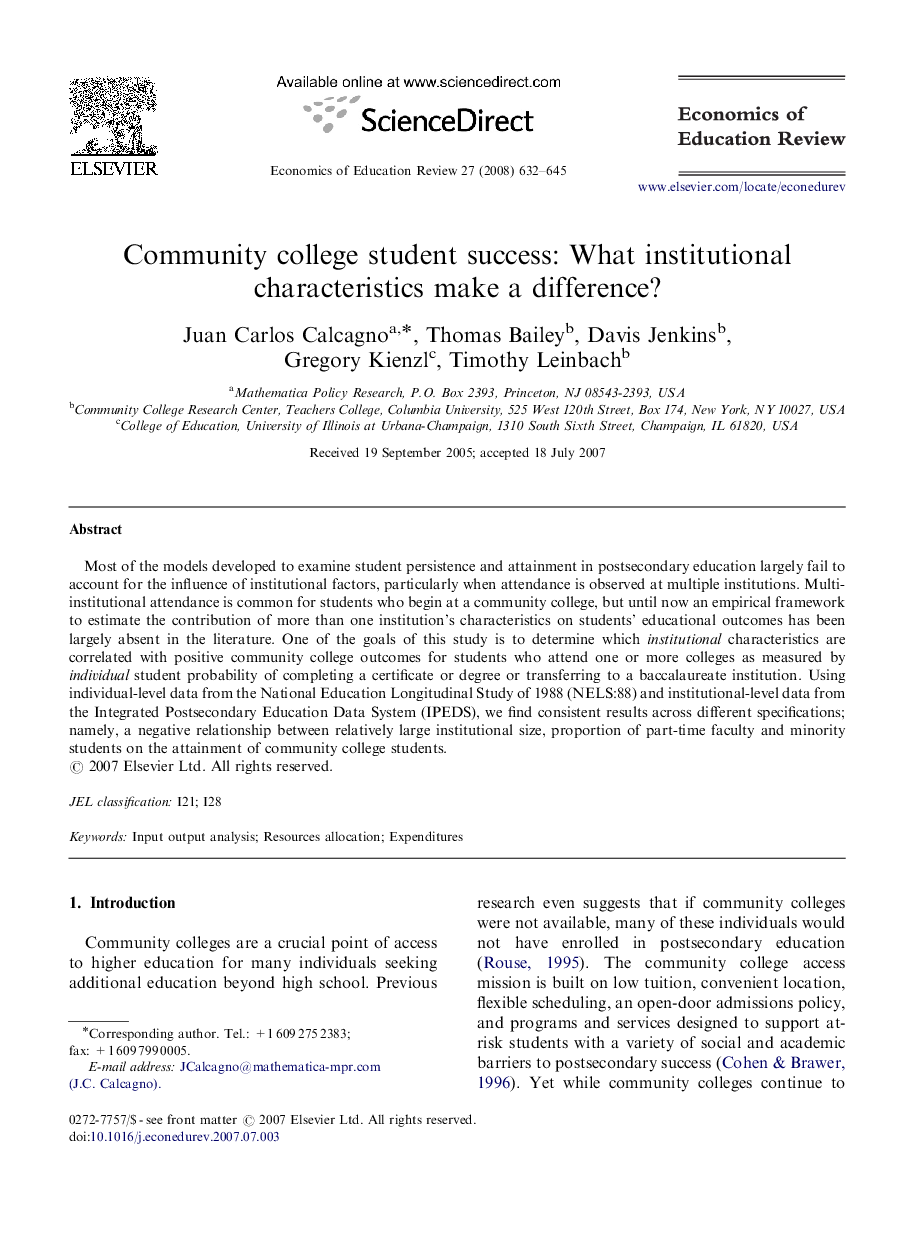| Article ID | Journal | Published Year | Pages | File Type |
|---|---|---|---|---|
| 354936 | Economics of Education Review | 2008 | 14 Pages |
Most of the models developed to examine student persistence and attainment in postsecondary education largely fail to account for the influence of institutional factors, particularly when attendance is observed at multiple institutions. Multi-institutional attendance is common for students who begin at a community college, but until now an empirical framework to estimate the contribution of more than one institution's characteristics on students’ educational outcomes has been largely absent in the literature. One of the goals of this study is to determine which institutional characteristics are correlated with positive community college outcomes for students who attend one or more colleges as measured by individual student probability of completing a certificate or degree or transferring to a baccalaureate institution. Using individual-level data from the National Education Longitudinal Study of 1988 (NELS:88) and institutional-level data from the Integrated Postsecondary Education Data System (IPEDS), we find consistent results across different specifications; namely, a negative relationship between relatively large institutional size, proportion of part-time faculty and minority students on the attainment of community college students.
